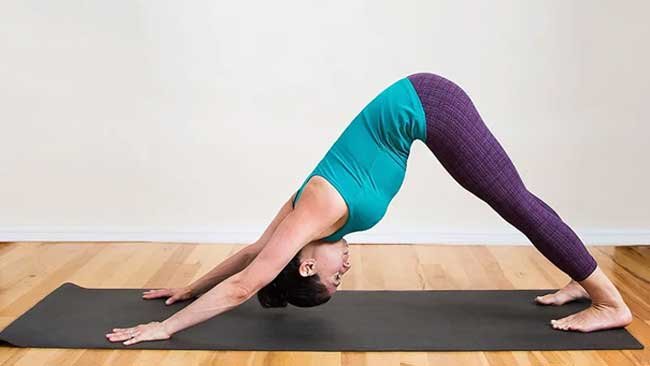Table of Contents
Downward Facing Dog Steps & Benefits
If there’s one yoga pose that shows up in almost every practice, it’s the Downward-Facing Dog, or Adho Mukha Svanasana. Often used as a transition, rest, or strength builder, this pose offers a full-body stretch that energizes the body and calms the mind. In this post, you’ll learn how to do Downward Dog correctly, its amazing benefits, common mistakes, and how to modify it for your level.
What Is Downward Facing Dog?
Downward Dog is a foundational yoga pose that mimics the shape of an inverted “V.” It stretches the spine, strengthens the arms and legs, and improves circulation.
It’s commonly practiced in:
-
Hatha Yoga
-
Vinyasa Flow
-
Ashtanga Yoga
-
Power Yoga
-
Restorative sequences (with props)
How to Do Downward-Facing Dog (Step-by-Step)
-
Start in a tabletop position (on hands and knees).
-
Spread your fingers wide, press palms firmly into the mat.
-
Tuck your toes, lift your knees off the floor.
-
Straighten your legs as much as possible while keeping a flat back.
-
Draw your hips upward and back, forming an inverted “V” shape.
-
Keep your head relaxed, ears in line with arms, gaze toward your legs or navel.
- Try to press your heel onto the floor, but without straining.
-
Breathe deeply and hold for 5–10 breaths.
Benefits of Downward-Facing Dog
-
Strengthens arms, shoulders, wrists, and legs
-
Stretches hamstrings, calves, and spine
-
Improves circulation by reversing blood flow
-
Calms the mind and relieves stress
-
Improves posture and balance
-
It can relieve back pain when done with proper form
Common Mistakes to Avoid
-
Rounding the spine — bend your knees if needed to keep the back long.
-
Letting weight collapse into wrists — distribute weight through the entire hand.
-
Tensing the neck — keep your head relaxed.
-
Trying to “force” heels to the ground — For ideal pose, yes, but not necessary if difficult.
Modifications & Variations
-
For Beginners: Bend your knees slightly and lift your heels to protect your hamstrings.
-
With Wrist Pain: Use yoga blocks under hands or practice on forearms.
-
Restorative Version: Place your hands on a chair or use a bolster under your head.
When to Avoid
Avoid this pose if you have:
-
High blood pressure (unless cleared by a doctor)
-
Recent wrist, shoulder, or back injuries
-
Late-stage pregnancy (modify or avoid)
This pose is often used:
-
As a transition between standing and floor poses
-
In Sun Salutations (Surya Namaskar)
-
As a resting pose between sequences
Downward-Facing Dog is more than just a pose — it’s a reset. Whether you’re flowing through a class or stretching at home, this posture brings balance, strength, and a sense of grounded energy. Practice it regularly, and it will grow with you in strength, ease, and awareness.
You may also like –
Surya Namaskar Steps Name With Mantra & Images

